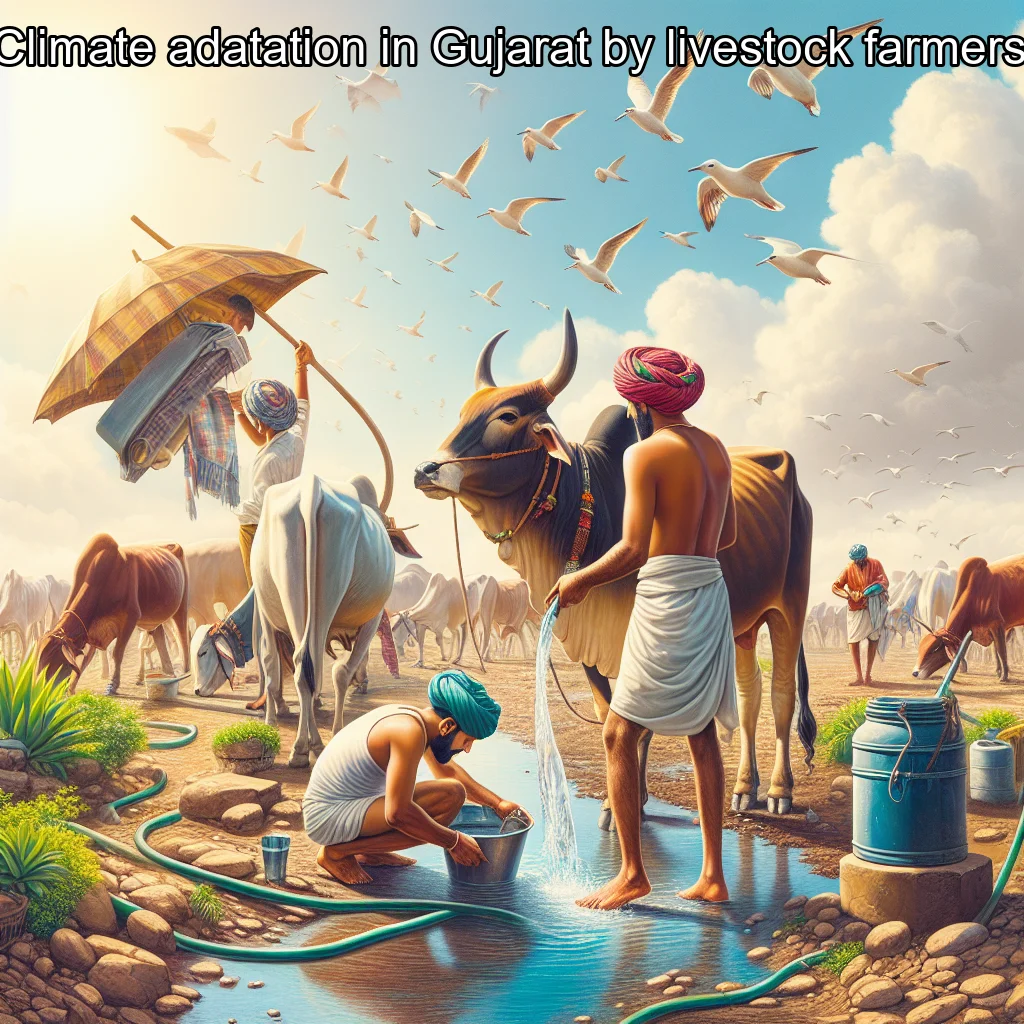Climate Adaptation in Gujarat: A Lifeline for Livestock Farmers
Climate change is no longer a distant threat; it’s a present-day reality affecting millions worldwide. Among the most vulnerable are the livestock farmers in Gujarat, a state in India known for its rich agricultural heritage. This blog post delves into how these farmers are adapting to a changing climate, the challenges they face, and what this means for the future of agriculture in the region.
The Impact of Climate Change on Livestock Farming
Gujarat’s livestock farmers are on the frontlines of climate change, experiencing its effects firsthand. With rising temperatures, erratic rainfall, and increasing frequency of extreme weather events, the challenges are mounting. These changes directly impact:
- Water Availability: Droughts are becoming more frequent, leading to water scarcity that affects both crops and livestock.
- Feed Resources: Irregular rainfall patterns disrupt the growth of feed crops, leading to shortages.
- Livestock Health: Higher temperatures increase the risk of heat stress and disease outbreaks in animals.
Adaptation Strategies Employed by Farmers
Recognizing the urgent need to adapt, many farmers in Gujarat are embracing innovative strategies to safeguard their livelihoods.
1. Diversification of Livestock
- Mixed Farming Systems: Farmers are integrating crop and livestock farming to create a more resilient agricultural model.
- Breed Selection: By opting for heat-tolerant and disease-resistant livestock breeds, farmers are better equipped to handle climatic stressors.
2. Water Management Techniques
- Rainwater Harvesting: Collecting and storing rainwater during the monsoon season helps mitigate periods of drought.
- Drip Irrigation: This efficient watering method reduces water waste and ensures crops receive the necessary moisture.
3. Improved Feeding Practices
- Alternative Feed Sources: Farmers are utilizing crop residues and by-products to supplement traditional feed.
- Silage Making: This process allows farmers to preserve green fodder for use during lean periods.
Government and NGO Support
Both governmental bodies and non-governmental organizations are playing crucial roles in supporting adaptation efforts.
- Financial Incentives: Subsidies and grants are provided to encourage the adoption of sustainable practices.
- Training Programs: Workshops and training sessions educate farmers on climate-resilient techniques.
- Research and Development: Ongoing research into climate-resilient breeds and farming practices aids adaptation efforts.
Real-World Example: The Tale of Patel Dairy Farm
Take, for instance, the Patel Dairy Farm in Jamnagar. Owner Ramesh Patel has successfully implemented rainwater harvesting and switched to a mixed farming system. His farm is now a model of climate-resilient agriculture, boasting higher productivity and reduced resource dependency.
The Road Ahead: Challenges and Opportunities
Despite these efforts, challenges remain. Limited financial resources, lack of awareness, and infrastructural deficits continue to hinder widespread adaptation. However, the promise of increased resilience, productivity, and sustainability presents a compelling case for continued investment in climate adaptation.
Conclusion: A Call to Action
The journey of Gujarat’s livestock farmers highlights both the struggles and triumphs in adapting to climate change. As these farmers forge a path forward, they offer valuable lessons in resilience and innovation. For policymakers, researchers, and the global community, supporting these efforts isn’t just an option—it’s a necessity for ensuring food security and sustainable development.
In closing, it’s imperative to support these farmers through continued investment in research, infrastructure, and education. By doing so, we not only safeguard their livelihoods but also contribute to a sustainable agricultural future.
Join the conversation: How can we further support climate adaptation efforts in agriculture? Share your thoughts and ideas in the comments below.

